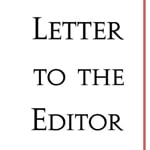Submitted by Anne Caron, Dave Caron, Abigail Hafer, D.Phil., Bill Knox, Clare Shawcross, Andrew Van Praagh, MPH, Ph.D., and Catherine Van Praagh
Jan. 8, 2021—During the Board of Health meeting on January 4, 2021, in the section to discuss social distancing and the criteria for school closings and classroom quarantining, Dr. Ann Kiessling asserted multiple times that the level of COVID-19 in the local community should not be a consideration in the decision, stating that “those guidelines are gone” and that they “were in the spring”. She made this position very clear in the following statement: “One point I want to make really strongly here. It’s the guidance that community, the incidence of positive cases in the community should guide whether the school closes or not, that guidance is over. Schools can stay open perfectly safely in communities with very high COVID numbers.”
We find this statement to be at odds with the information that we can find from numerous resources, which still strongly assert that the levels of community transmission are a key indicator that should be considered in this decision.
The US Centers for Disease Control and Prevention (CDC), in their page “Indicators for Dynamic School Decision-Making” (https://www.cdc.gov/coronavirus/2019-ncov/community/schools-childcare/indicators.html), updated on September 15, 2020, states the following:
“CDC recommends the use of 3 core indicators. These core indicators include two measures of community burden (number of new cases per 100,000 persons in the past 14 days; and percentage of RT-PCR tests that are positive during the last 14 days) AND one self-assessed measure of school implementation of key mitigation strategies. CDC suggests decision-makers use one or both of the first core measures of community burden in addition to a third core indicator, the self-assessed measure of school implementation of key mitigation strategies. These key mitigation strategies should be implemented to the largest extent possible.”
The Massachusetts Department of Elementary and Secondary Education (DESE) specifically references the CDC guidance on their primary COVID-19 web site(https://www.doe.mass.edu/covid19/). In addition, DESE released their “Initial Fall School Reopening Guidance” (https://www.doe.mass.edu/covid19/return-to-school/guidance.pdf) on June 25, 2020. In it, they have the following:
“Finally, this guidance is for fall reopening and is predicated on the Commonwealth continuing to progress through the phases of reopening with low COVID-19 public health metrics. It will be critical to continue to take into account the community context of COVID-19 prevalence into the fall and winter.”
The National Academies of Sciences, Engineering, and Medicine released in July 2020 a consensus report entitled “Reopening K-12 Schools During the COVID-19 Pandemic: Prioritizing Health, Equity, and Communities” (https://www.nap.edu/catalog/25858/reopening-k-12-schools-during-the-covid-19-pandemic-prioritizing). In it, they reach the following conclusion in their chapter on school reopening:
“Conclusion 4.3: Education leaders need to have a way to monitor data on the virus so they can track community spread. If there is substantial community spread, schools may need to close for in-person learning. Decisions about what constitutes substantial community transmission and under what conditions schools would again close need to be outlined before the school year begins.”
The European Centre for Disease Prevention and Control (ECDC), in their guidance report titled “COVID-19 in children and the role of school settings in transmission – first update” (https://www.ecdc.europa.eu/sites/default/files/documents/COVID-19-in-children-and-the-role-of-school-settings-in-transmission-first-update_0.pdf), updated on December 23, 2020, assert as a moderate confidence finding that “(i)n situations with high levels of community transmission, prevalence of COVID-19 within the school is influenced by the prevalence in the community”.
Finally, The Lancet on December 8, 2020 published an article titled “SARS-CoV-2 infection and transmission in educational settings: a prospective, cross-sectional analysis of infection clusters and outbreaks in England” (https://www.thelancet.com/journals/laninf/article/PIIS1473-3099(20)30882-3/fulltext). They find the following: “The risk of an outbreak increased by 72% (95% CI 28–130) for every five cases per 100 000 population increase in community incidence”. Their interpretation: “The strong association with regional COVID-19 incidence emphasises the importance of controlling community transmission to protect educational settings.”
The above guidance, strongly supported by a recent peer reviewed study, seem to clearly show that Dr. Kiessling’s statements were in error and that levels of community transmission should remain a foremost consideration in the decisions around schooling. This would appear to be even more important as information is coming out about new and potentially more transmissible strains of the virus circulating.
Dr. Bea Brunkhorst, also on the Board of Health, asked Dr. Kiessling for references for her assertions at the meeting. We look forward to reviewing whatever material Dr. Kiessling is able to provide.






























Thank you for your clearly articulated points and citations. It would be useful to see a comparable summary of Dr Kiessling’s assertions as well.